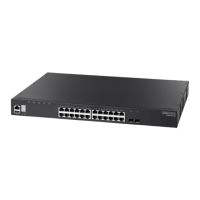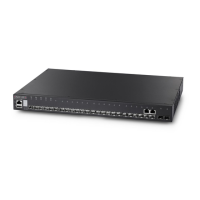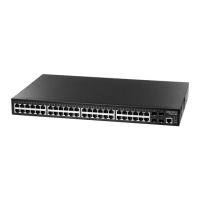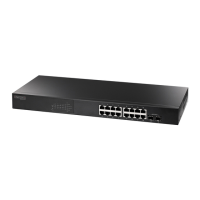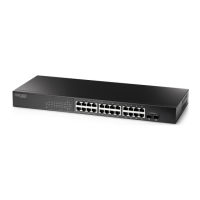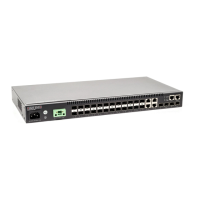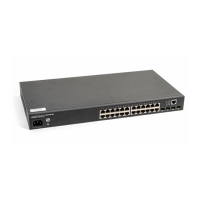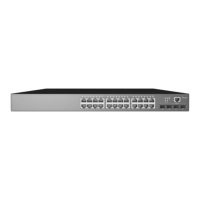Chapter 50
| IP Routing Commands
Open Shortest Path First (OSPFv3)
– 1069 –
Command Mode
Privileged Exec
Example
Console#show ipv6 ospf neighbor
ID Pri State Interface ID Interface
--------------- ------ ---------------- --------------- --------------
192.168.0.2 1 FULL/DR 1001 vlan1
Console#
show ipv6 ospf route This command displays the OSPF routing table.
Syntax
show ipv6 ospf [tag process-id] route
process-id - The ID of the router process for which information will be
displayed. (Range: 1-10)
Command Mode
Privileged Exec
Table 21: show ipv6 ospf neighbor - display description
Field Description
ID Neighbor’s router ID
Pri Neighbor’s router priority
State OSPF state and identification flag
States include:
Down – Connection down
Attempt – Connection down, but attempting contact (for non-broadcast networks)
Init – Have received Hello packet, but communications not yet established
Two-way – Bidirectional communications established
ExStart – Initializing adjacency between neighbors
Exchange – Database descriptions being exchanged
Loading – LSA databases being exchanged
Full – Neighboring routers now fully adjacent
Identification flags include:
D – Dynamic neighbor
S – Static neighbor
DR – Designated router
BDR – Backup designated router
Interface ID The Interface identifier that the neighbor advertises in its Hello Packets. This is a
32-bit number uniquely identifying the neighbor router’s interface. MIB-II IfIndex is
used for this identifier in some implementations.
The advantage to using the SNMP MIB-II ifIndex value is that this number
corresponds to the number that the user will see reported by SNMP.
Interface The interface to which this neighbor is attached
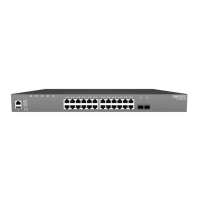
